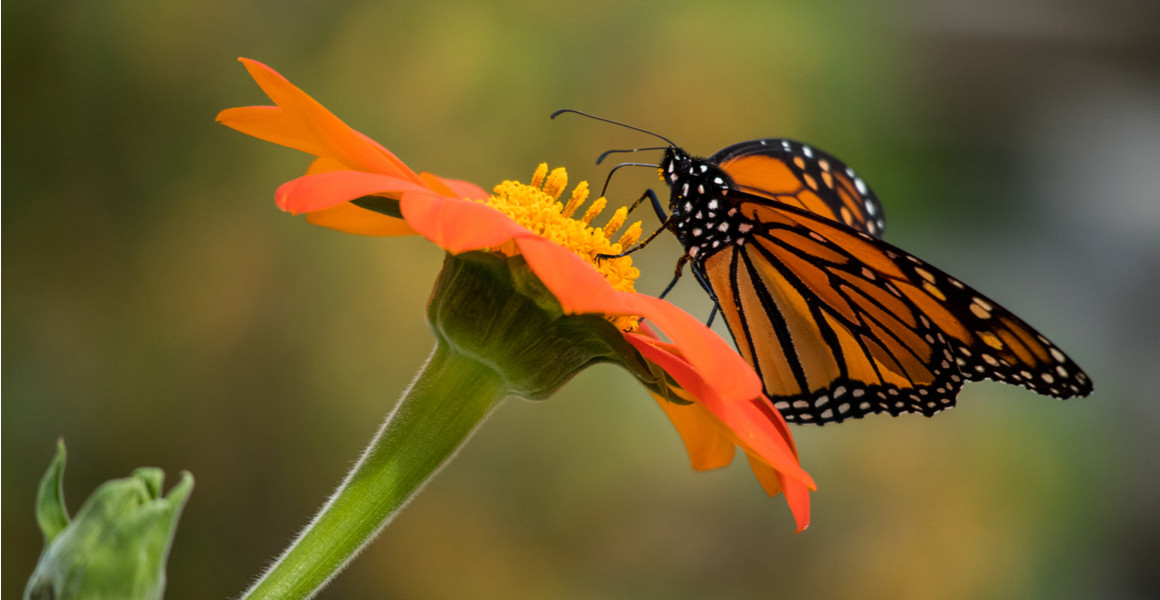
Bees, butterflies and moths ‘confused’ by air pollution
Air pollution obscures the sweet smell of flowers, making it much harder for pollinators to find them.
Research led by the University of Reading found that insects including bees, flies, moths and butterflies were being impaired by air pollution, reducing pollination rates by as much as 31%.
With 70% of the world’s crops, including apples, strawberries and cocoa, relying on insect pollination, scientists are concerned that the impact of common air pollutants goes far beyond impacts on human health.
Lead author Dr James Ryalls, says, ‘The findings are worrying because these pollutants are commonly found in the air many of us breathe every day. We know that these pollutants are bad for our health, and the significant reductions we saw in pollinator numbers and activity shows that there are also clear implications for the natural ecosystems we depend on.’
The findings of the study were published in the journal Environmental Pollution.

Common air pollutants include ground-level ozone, nitrogen oxides and sulphur oxides. Image © LanaElcova/Shutterstock
What is air pollution?
Air pollutants are commonly found across the world and include any substance that contaminates the environment by modifying the normal characteristics of the atmosphere.
After fuels are burnt, the waste products (as well as their impurities) can react in the atmosphere to produce a variety of harmful products. Common air pollutants include nitrogen oxides, ozone, sulphur oxides and particulates.
These have a diverse range of impacts, from causing acid rain to harming health. Air pollution has both short and long-term health impacts, from shortness of breath and exacerbating asthma to increasing the risk of heart failure.
As a result, the World Health Organisation (WHO) estimates that these pollutants cause around four million deaths a year, and suggest that 91% of the global population live in areas where air pollution exceeds recommended limits.
Aside from its impact on people, air pollution also impacts the natural world. In vertebrates, air pollution can cause similar issues as in humans, while pollutants like ozone and particulate matter can impair the ability of plants to photosynthesise.
The scents that plants produce to attract their insect pollinators are also affected by air pollution. While there are a number of ways insects find plants to pollinate, scent is one of the most important. However, air pollution can react with the compounds in these scents, making them much less recognisable to the insects they are supposed to be attracting.
The researchers wanted to investigate how this impacted pollinators in practice, by running an experiment testing their ability to find plants to pollinate.
Dr Robbie Girling, one of the paper’s co-authors, described the findings as ‘much more dramatic than we had expected.’

Pollution reduced the visits of pollinators to the plants by up to 90% in some cases. Image © RUKSUTAKARN studio/Shutterstock
Pollinators in peril
The researchers used a purpose-built facility to regulate the levels of nitrogen oxides and ozone in a field environment, looking at the impacts these pollutants had on free-flying local pollinators and the pollination of black mustard.
They found that there up to 70% fewer pollinators for plants in polluted air, which led to a reduction in pollination of up to 31%.
With 8% of the value of agricultural food production worldwide dependent on pollinators, productivity declines from pollution could be causing billions of pounds worth of economic damage each year.
Furthermore, the levels of pollution used in the study were below the average maximum levels known from the real world, with scientists using concentrations around half of that deemed safe by the US government.
These higher levels of air pollution in the real world could mean that the impacts on pollinators and other insect life are more severe than demonstrated in this study.
The UK Government says that it intends to tackle air pollution through a variety of techniques, including the consideration of an SMS air pollution alert scheme and aiming to set new targets for particulates and other pollutants.
To find out levels of air pollution in your area, visit DEFRA’s forecasting site here.






































